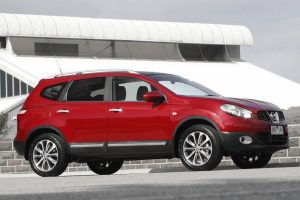Recalls: Nissan J10 Dualis+2
Overview
Manufacturers, or importers, issue recalls for defects or faults which have the potential to cause injury. Generally, manufacturers will inform the original buyers if their vehicle is subject to a recall and of the steps required to remedy the defect or fault. Please note that the recalls below (if any) are for Australian-delivered vehicles only. Furthermore, the number of recalls should not be taken as an indication of a model’s reliability or its safety more generally.
Recalls: Nissan J10 Dualis+2
- In November 2011, a recall was issued for Nissan J10 Dualis+2 vehicles manufactured from 5 October 2010 to 31 January 2011 due to the potential for the electric power steering (EPS) control unit to stop working (PRA 2011/12922). As a result, the steering system would remain functional but would require increased steering effort. The power steering warning lamp would also illuminate.
- In October 2012, a recall was issued for Nissan J10 Dualis vehicles due to a steering wheel boss – connected to the steering column – not having the required strength. If the steering wheel boss were to separate from the steering column, there may be a loss of steering control. The affected vehicles had VINs in the range SJNFBAJ10A2498827 to SJNJBNJ10A7127131, though not all of these vehicles were subject to the recall (PRA 2012/13309).
- In January 2015, a recall was issued for Nissan J10 Dualis+2 vehicles that were built from February 2012 to September 2012. In these vehicles, the steering wheel boss – which was connected to the steering column – may not have the appropriate strength. If a load was applied to the steering wheel which was higher than the load applied during normal steering operation, the boss may separate from the steering column. If this occurred, steering control would be lost, posing an accident hazard. The recalled Dualis+2 vehicles had VINs in the range SJN*B*J10A1196857 to SJN*B*J10A7145388 (PRA 2015/14518).
Problems and faults: Nissan J10 Dualis+2
Overview
This section identifies potential problems, causes and fixes based on the experiences of owners and repairers, online sources and technical service bulletins. This information is provided solely for reference purposes and AustralianCar.Reviews recommends that only properly qualified persons carry out repairs or modifications. Furthermore, the number of items below should not be taken as an indicator of a model’s reliability or the frequency with which they may occur.
To report a problem or fault to the AustralianCar.Reviews team, please use the Contact Us form. Note that AustralianCar.Reviews does not offer advice on automotive problems or disputes; such enquiries will not receive a reply. For vehicles purchased from dealers after 1 January 2011, please see our Australian Consumer Law fact sheet.
Nissan Dualis+2 2.0 dCi: diesel particulate filter clogged (DPF)
For Nissan J10 Dualis+2 models with 2.0-litre turbo-diesel engines, the diesel particulate filter (DPF) can become clogged if a lack of extended-run driving prevents the self-cleaning (‘regeneration’) process from being initiated. To initiate the regeneration process, the Dualis needs to be driven with engine speed in excess of 3000 rpm to generate sufficient heat in the exhaust gases. Depending on the amount of soot, the regeneration process can take as long as 30 minutes.
If the DPF is becoming clogged, a warning light will illuminate on the dashboard. If the DPF is clogged, then the Dualis enters a fail-safe mode in which engine speed is limited to a maximum of 3000 rpm. If this occurs, the DPF must be serviced, while the engine oil and filter must also be replaced.
Nissan J10 Dualis+2: windscreen leaks
The front windscreen may be susceptible to leaks, leading to condensation inside the car.




